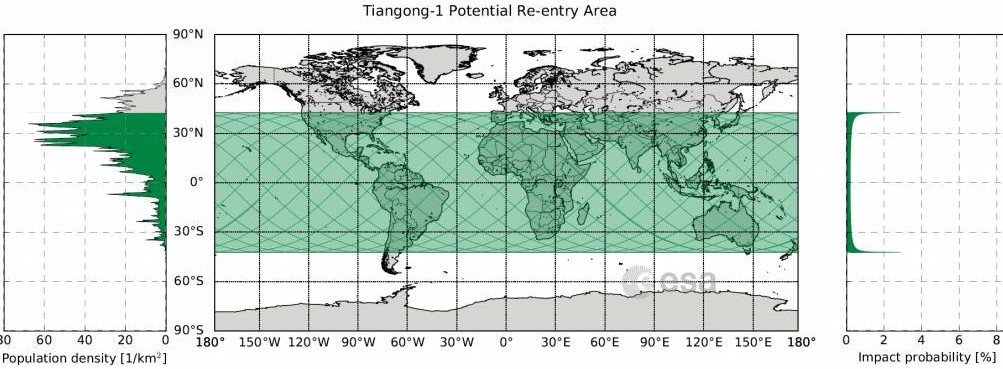China's Big Tiangong-1 Space Lab May Fall to Earth This Month


The European Space Agency (ESA) has issued a new re-entry forecast for China's Tiangong-1 space lab.
The 8.5-ton spacecraft is now expected to fall into Earth's atmosphere between March 24 and April 19, though ESA officials stressed that this is a rough estimate.
"Re-entry will take place anywhere between 43 degrees north and 43 degrees south (e.g. Spain, France, Portugal, Greece, etc.)" latitude, officials with the Space Debris Office at ESA’s European Space Operations Center in Darmstadt, Germany, wrote in an update last week. "Areas outside of these latitudes can be excluded. At no time will a precise time/location prediction from ESA be possible."
Tiangong-1 was the first space lab built by China. It launched in late September 2011, to help the nation master the technologies needed to construct and operate a crewed space station. China aims to have such a station up and running in Earth orbit by the 2020s.
The first Chinese orbital docking occurred between Tiangong-1 and an unpiloted Shenzhou spacecraft on Nov. 2, 2011. Two crewed missions later visited Tiangong-1: Shenzhou 9 and Shenzhou 10, which launched in June 2012 and June 2013, respectively.
Breaking space news, the latest updates on rocket launches, skywatching events and more!

Leonard David is an award-winning space journalist who has been reporting on space activities for more than 50 years. Currently writing as Space.com's Space Insider Columnist among his other projects, Leonard has authored numerous books on space exploration, Mars missions and more, with his latest being "Moon Rush: The New Space Race" published in 2019 by National Geographic. He also wrote "Mars: Our Future on the Red Planet" released in 2016 by National Geographic. Leonard has served as a correspondent for SpaceNews, Scientific American and Aerospace America for the AIAA. He has received many awards, including the first Ordway Award for Sustained Excellence in Spaceflight History in 2015 at the AAS Wernher von Braun Memorial Symposium. You can find out Leonard's latest project at his website and on Twitter.

